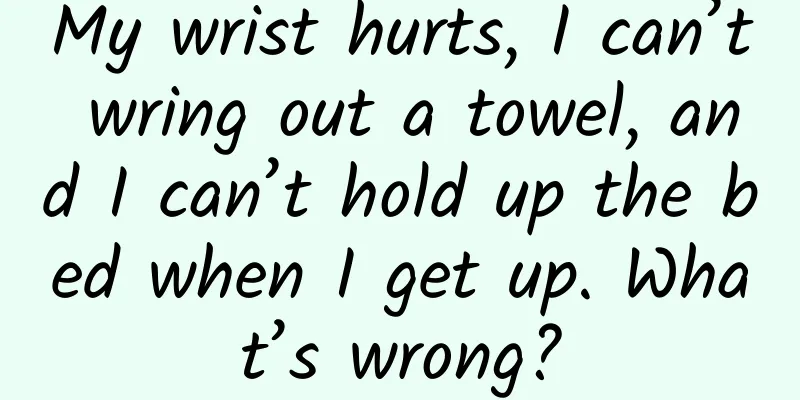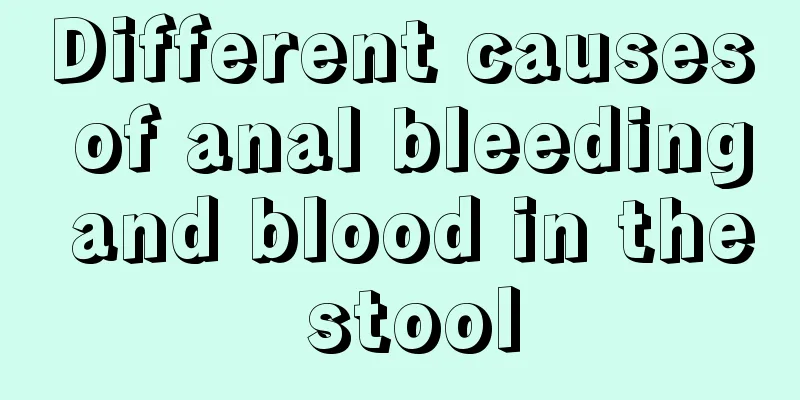My wrist hurts, I can’t wring out a towel, and I can’t hold up the bed when I get up. What’s wrong?

|
Author: Chen Shanlin, Chief Physician, Beijing Jishuitan Hospital Standing Committee Member of the Hand Surgery Branch of the Chinese Medical Association Reviewer: Li Jun, Chief Physician, Peking University First Hospital There are many reasons for wrist pain, such as ligament injury, distal radioulnar joint subluxation, and rupture of various ligaments between the carpal bones, but the most common cause is triangular fibrocartilage complex (TFCC) injury. Although it is common, people are unfamiliar with this name. Today we will learn about triangular fibrocartilage complex injury. Its injury can bring a lot of inconvenience and trouble to your life, such as pain in your hands when wringing a towel, and inability to support the bed or chair with your hands when getting up from the bed or chair. 1. Where is the triangular fibrocartilage complex located in the human body? The triangular fibrocartilage complex is a very small structure that is composed of multiple structures. The core of the triangular fibrocartilage complex is a cartilage disc, surrounded by a circle of ligaments, like a hammock. There is a rope between two trees, and there is a trampoline in the middle. The bed is the cartilage disc. There is a rivet at the base of the cartilage disc, which is riveted to the ground, making it very stable. There is a circle on the dorsal side of the surface, mainly on the dorsal side and ulnar side, and there are ligaments hanging, which mainly play a role in stress absorption and stability. Figure 1 Original copyright image, no permission to reprint There are many structures in the triangular fibrous cartilage complex, which is particularly important in the wrist. A large part of the stability of wrist rotation comes from the triangular fibrous cartilage complex. We call the physiological function of the triangular fibrous cartilage complex the "black box" of the wrist joint. Each part of the triangular fibrocartilage complex can be injured, and there are different classifications depending on the location of the injury. 2. What are the symptoms after triangular fibrocartilage complex injury? The main symptoms of triangular fibrocartilage complex injury are pain, instability, and stiffness. After the triangular fibrocartilage complex is injured, the patient will find that he cannot wring a towel, or experience symptoms when trying to get up from the bed or chair. We call this the bed support test. In 80%-90% of triangular fibrocartilage complex injuries, the bed support test is positive. There are other symptoms that vary from person to person. Sometimes pain occurs in certain body positions or during certain tasks. 2. Who is prone to triangular fibrocartilage complex injury? People who often put stress on their wrists, such as wrestlers; People who swing a ball, especially tennis or badminton; The chef needs to flip the wok; Nurses in the intensive care unit need to move patients frequently, which puts weight on the wrist joints. Sometimes, abnormal twisting may occur suddenly, causing injuries. Oral medicine and dentistry may also appear. We often see people in these occupations in the outpatient clinic. They still feel pain for four months or more than a year, which affects their daily work or hobbies. For people in these special occupations, is there any way to prevent triangular fibrocartilage complex injuries? Because most triangular fibrocartilage complex injuries are caused by accidents, such as twisting a box, or when a nurse in the intensive care unit moves a patient and the patient suddenly becomes agitated, or a classical wrestler cannot avoid high-load wrist activities. It is difficult to avoid and prevent these special occupations. 2. How to treat triangular fibrocartilage complex injury? Triangular fibrocartilage complex injury is mainly traumatic type, which is divided into types A, B, C, and D. They are relatively easy to remember as they are all the first letters of the English alphabet. A:Ischemia area, Avascular area; B: Base of the styloid, which is the ulnar part of the cartilage disc; C: volar part of the cartilaginous disc, Carpus; D: Radial edge of the cartilage disc, RaDius, means the radial edge of the cartilage disc is completely split. The classification is mainly related to treatment: Type B is particularly common and is also divided into other subtypes. For some common types, most of them are treated conservatively first. Some patients are asked to flex their elbows, supinate, and wear a brace for one month. After one month, the brace is shortened and only the forearm is fixed. At this time, the forearm can rotate and then be fixed for another two months. For most type B injuries, if they are discovered within a week, more than 70% of them can get relatively satisfactory results if they are treated in this way. If the injury is very serious and conservative treatment is considered ineffective, minimally invasive surgical intervention may be performed earlier, that is, surgical treatment under arthroscopy, which can repair it through arthroscopic surgery. Different types of ulnar wrist pain require different treatments. Most people do not have severe pain, so conservative treatment is recommended in the early stages. Some patients are even observed for one year if they are not considered to have severe pain or multiple injuries. During the one to two years, 40% of patients do not need surgery as long as they avoid these special movements and have no obvious obstacles. The other part is closely followed up and undergoes minimally invasive surgery under arthroscopy when necessary. Type A is an ischemic area, where the central part of the cartilage disc has almost no blood supply, which means that if there is a tear or perforation in this area, surgical repair is often futile. Because there is no blood supply, there is no healing. For type A, it is not that there is no other treatment method, there are other corresponding treatments. Type D is a tear of the entire radial edge of the cartilage disc, which will cause a decrease in stability. It is difficult to repair through minimally invasive surgery, and conservative treatment often does not produce good results. Therefore, active treatment and early intervention are required, and open surgery such as ligament reconstruction should be selected. Another type of triangular fibrocartilage complex injury is degenerative, which mainly depends on the cartilage disc itself and is divided into four stages: The ulna collides with the corresponding carpal bone, with a cartilage disc in the middle that absorbs pressure and acts as a pressure cushion. As time goes by, the ulna grows longer, causing greater stress in this area. It pushes against the cartilage little by little. At the beginning, the cushion in the contact area with the other bone becomes thinner, which is stage one. If it pushes through, it is stage two. The cartilage in the corresponding carpal bone area degenerates, which is stage three. There are other conditions, such as damage to the ligaments between the carpal bones, which is stage four. Each stage is different, and the corresponding treatment plans are not exactly the same. |
Recommend
What is the reason for the blood flow signal in breast fibroids?
In recent years, more and more women have been su...
iCrossing: It is estimated that the total number of Facebook users will reach 1 billion in August 2012
January 12, 2012 Facebook will likely reach 1 bil...
University of California: A survey found that people who frequently use social networks have a 12% lower overall risk of death
Recently, we often see heated discussions on the ...
5 healthy expressions for women's "V" zone
appearance Normally, the vagina and vulva often h...
Do pregnant women need to take cod liver oil?
When babies eat cod liver oil, it helps promote t...
The fastest way to treat mouth ulcers in pregnant women
Mouth ulcers are very painful for pregnant women....
What is the nutritional value of juice? How to make juice nutritious and delicious?
Fruit juice is healthy, nutritious, and delicious,...
How big is the fetus at 13 weeks of pregnancy? How is the fetus developing?
A baby at 13 weeks of pregnancy is already very h...
Addicted to smoking? Say no to "smoking addiction"! |COPD Science Popularization
If you have ever persuaded someone to quit smokin...
Postoperative care for hysterectomy
The care we should take after a total hysterectom...
Dark brown blood on day 4 of period
Under normal circumstances, women have their peri...
Precautions and conditioning after medical abortion
Medical abortion is a method of abortion that is ...
Prenatal Depression Self-Test
In fact, many women experience varying degrees of...
Can I drink lemon water during my period?
Lemon juice is believed to be very common among m...









